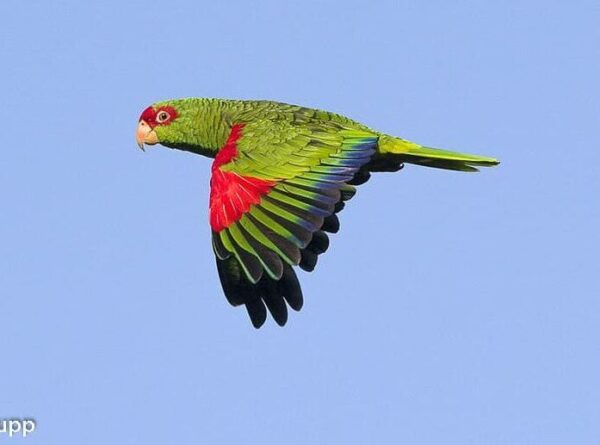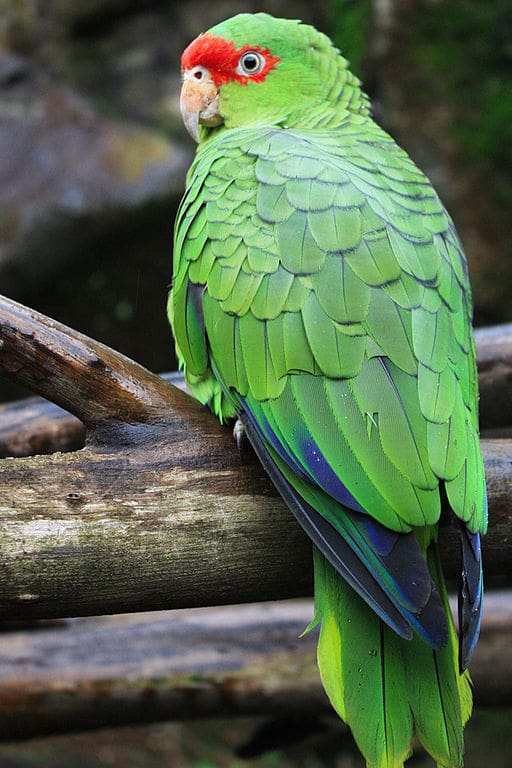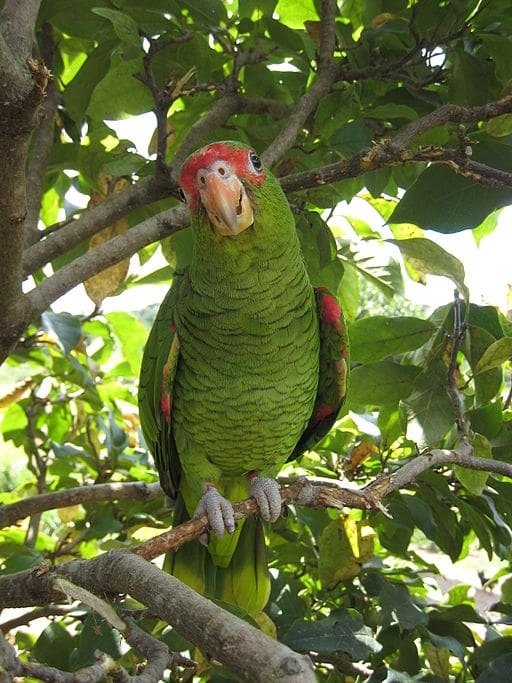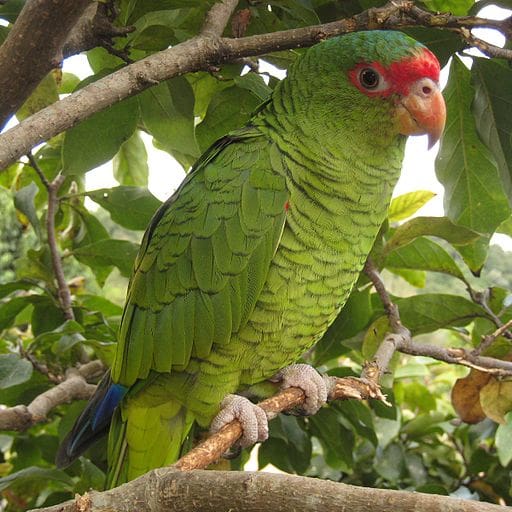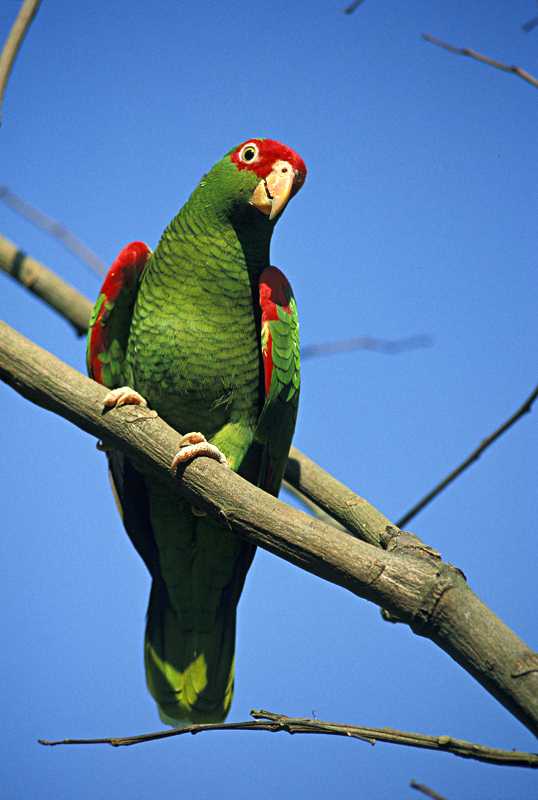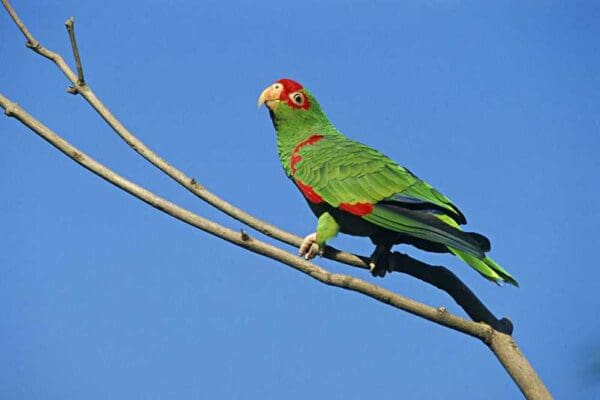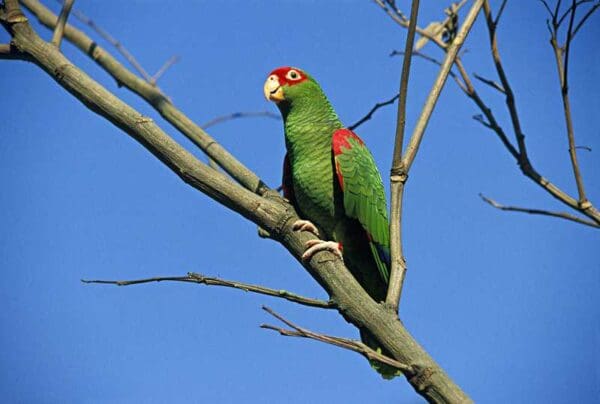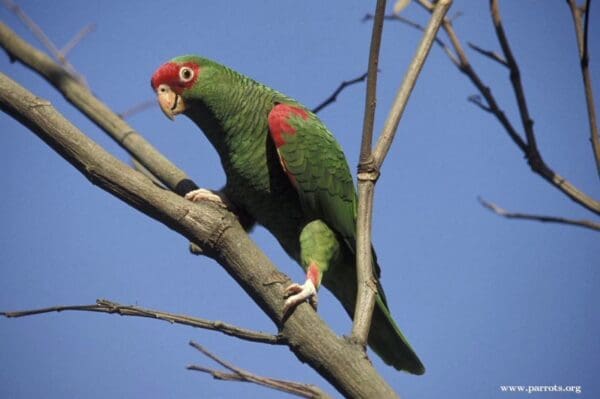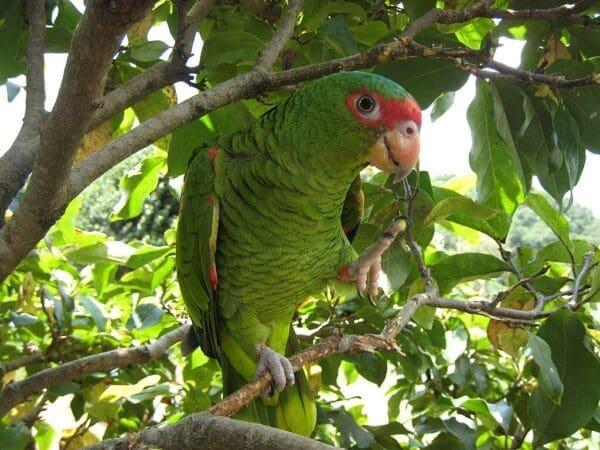Red-spectacled Amazon
Also known as:
Red-spectacled Parrot, Pretre's Amazon or Parrot
Also known as:
Red-spectacled Parrot, Pretre's Amazon or Parrot
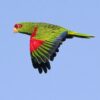
![© Paulo Barradas [CC BY 2.0] via Wikimedia Commons A Red-spectacled Amazon perches on a limb](https://parrots.org/wp-content/uploads/2023/01/wpt_Red-spectacled-Amazon_1413-6-100x100.jpg)
![© Marie (originally posted to Flickr as Temporaire) [CC BY-SA 2.0] via Wikimedia Commons A companion Red-spectacled Amazon perches in a tree](https://parrots.org/wp-content/uploads/2023/01/wpt_Red-spectacled-Amazon_1413-5-100x100.jpg)
![© Marie [CC BY-SA 2.0] via Wikimedia Commons A companion Red-spectacled Amazon perches in a tree](https://parrots.org/wp-content/uploads/2023/01/wpt_Red-spectacled-Amazon_1413-4-100x100.jpg)
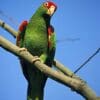
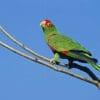
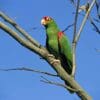
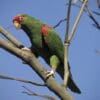
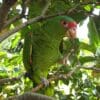
DID YOU KNOW?
This Amazon engages in very loud, spectacular exhibitions of acrobatics when congregating for its nighttime roost. Hundreds of birds are seen grouping together.

Amazona

pretrei
Size:
32 cm (12.5 in)
Weight:
295 g (10.3 oz)
Subspecies including nominate:
one
Colour Adult:
Male-all green, darker on back and wings, the feathers edged with black; red on forehead, crown to lores and around eyes; red thighs, bend of wing, carpal edge, alula, and primary coverts; tail green, tipped widely yellow/green, and outer side tail feathers with red spot at base of inner web. Beak yellow/horn. Eye ring white. Eye orange/yellow. Female-carpal edge mixed red and green/yellow; less red on bend of wing.
Colour Juvenile:
Red on head confined to forehead and lores, with scattered red feathers on green crown and around eyes; carpal edge yellow/green; less red on bend of wing; alula and thighs green. Eye pale grey.
Call:
While in flight a piercing, high-pitched screech and lower hoarser notes. Also repetitive notes hee-o…hee-o.
More Information:
Content Sources:
CITES
BirdLife International
Cornell Lab of Ornithology/Birds of the World
Parrots: A Guide to Parrots of the World, Juniper and Parr, 1998
Parrots: Status Survey and Conservation Plan 2000-2004, Snyder, McGowan, Gilardi and Grajal, 2000.
Parrots of the World, Forshaw and Cooper, 1977. 2010 edition
Parrots of the World, Forshaw, 2006.
Lexicon of Parrots, Thomas Arndt.
Parrots in Aviculture, Low, 1992.
Psittacine Aviculture, Schubot, Clubb and Clubb, 1992.
Captive Status:
Unknown until 1980s when a few reached Europe; not well known elsewhere.
Longevity:
40+ yrs
Housing:
Aviary or suspended enclosure minimum length 3 m (9.8 ft).
Diet:
Fruit such as: apple, pear, orange, cactus fruits, pomegranate, etc, forming about 30 percent of the diet; vegetables such as: carrot, celery, green peas and beans, corn; green leaves such as: Swiss chard, lettuce, sowthistle, kale, dandelion, chickweed; spray millet; small seed mix such as: millet, canary, smaller amounts of oats, buckwheat and safflower; limited sunflower seed, dry, soaked or sprouted; cooked beans or pulses, and complete pellet.
Enrichment:
Socialization, bathing, swings, ladders, bird-safe chew items (pine, fir, willow, elder, sterilized pine cones, vegetable tanned leather), puzzle toys, foraging toys and branches.
Nest Box Size:
12″ x 12″ x 24″ (30.5 cm x 30.5 cm x 61 cm) vertical box.
Clutch Size:
3 to 4
Fledging Age:
7-8 weeks
Hatch Weight:
—
Peak Weight:
—
Weaning Weight:
—
World Population:
15,600 mature individuals and stable, although there is concern for further declines.
IUCN Red List Status:
Vulnerable
CITES Listing:
Appendix I
Threat Summary:
A BirdLife ‘restricted range’ species. Affected by loss of habitat due to cutting trees for timber and fuelwood. Also threatened by trapping; poachers often cut entire trees down to get nestlings although this has been reduced through environmental education. Another potential threat is disease outbreaks, including Avian Bornavirus and Psittacine Circoviral Disease, which are currently present in captive parrots in Brazil and may reach wild populations.
Range:
SE Brazil, in Rio Grande do Sul, also SE Santa Catarina. Isolated populations reaching E Paraguay and NE Argentina in Misiones.
Habitat:
Strongly associated with Araucaria angustifolia forest for roosting in off breeding season. Occurs in low open savanna woodland and riverine forests for breeding. From 300-1000 m (984-3280 ft).
Wild Diet:
Eats seeds of A. angustifolia and Podocarpus lamberti, fruits of Eugenia, Campomanesia and Melia. Also fruits of Cupania, Phytolacca, Allophylus, Nectandra, Ocotea, Cytharexylum, Myrcianthes, Blepharocalyx, Ficus and Symplocos.
Ecology and Behaviour:
Spread out in pairs while breeding but very social outside breeding season. Large communal roosts located in vicinity of plantations of Pinus and Eucalyptus. May move up to 100 km (62 mi) in a day in relation to food availability.
Clutch and Egg Size:
3 to 4 eggs, 34.5 x 26.5 mm (1.3 x 1 in).
Breeding Season:
September-December. Nest is a tree cavity in Nectandra, Ocotea, Cupania and Sebastiania sp.
Related Links:
—
